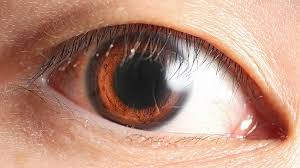
Understanding Colour Blindness: Diagnosis, Challenges, and Support
Colour blindness, or colour vision deficiency, is a common condition where individuals perceive colours differently from others. While many assume it means a complete lack of colour perception, most cases involve difficulty distinguishing specific colours or shades. However, even mild forms can influence daily activities and career decisions, while severe cases may pose greater challenges.
Diagnosing colour blindness typically involves simple, non-invasive tests. The widely-used Ishihara Test presents numbers or symbols embedded in coloured plates, designed to detect red-green deficiencies, the most common type. For a broader scope, the Richmond HRR Test evaluates both red-green and blue-yellow deficiencies. Advanced evaluations, such as the Cambridge Colour Test or Neitz Test of Colour Vision, help identify subtle differences in colour sensitivity, especially in younger patients.
Dr. Anuradha Narayanan, Principal of the Elite School of Optometry at Sankara Nethralaya, Chennai, emphasizes the importance of early diagnosis. “Colour blindness often goes undiagnosed, especially in milder cases. Early detection allows us to offer better management strategies and provide solutions that enable individuals to navigate their unique visual experiences confidently,” she explains.
The condition is typically inherited, with red-green colour blindness being the most prevalent, and it disproportionately affects males. However, it can also be acquired due to health conditions like diabetes or as a side effect of certain medications. In such cases, addressing the underlying health issue may improve colour perception.
For those with milder forms, colour-blindness glasses can enhance colour contrast, making it easier to differentiate between colours, though they do not enable the perception of entirely new colours. Regular eye check-ups are essential for individuals with acquired colour vision deficiency to monitor changes and manage any underlying health issues contributing to their condition.
Living with colour blindness doesn’t have to limit opportunities. With education, early diagnosis, and assistive technologies, individuals can overcome many challenges associated with the condition. Early detection in children is particularly critical, enabling guidance in career choices and ensuring they are equipped with the tools and support needed to thrive.
As Dr. Narayanan puts it, “With the right support and advice, people with colour blindness can lead fulfilling, productive lives. Awareness and proactive care are key to helping them navigate their world without missing opportunities.”